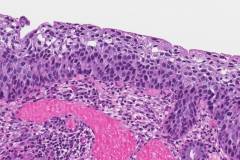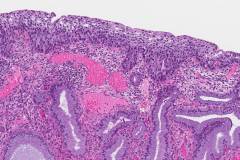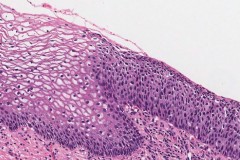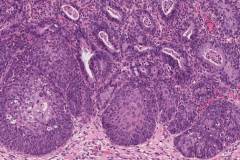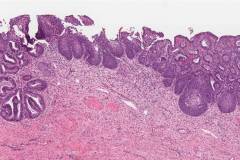High-grade squamous intraepithelial lesion (HSIL) of the cervix is a precursor lesion made up of an atypical proliferation of squamous cells confined to the epithelium on the surface of the cervix. Most cases are related to prior infection with high-risk strains of human papillomavirus (HPV). Usually, HSIL is asymptomatic and detected by cytology obtained from PAP smears. Microscopically the atypical squamous cells show minimal maturation and differentiation beyond the lower third of the epithelium. The atypical cells also show increased nuclear size, irregular nuclear membranes, increased nuclear-cytoplasmic ratios, and a perinuclear halo. Together, these changes are defined as “koliocytic atypia”. By immunohistochemistry, the atypical cells in HSIL show block positivity for p16. If left untreated, there is a high risk that HSIL will transform over time to invasive squamous cell carcinoma.
